The Canon EOS R5 was introduced in 2020 at a price of $3899 USD. Being Canon’s first mirrorless “professional” level camera body it was highly anticipated by the market. I pre-ordered mine before it came out and I have been using it as my main camera for pretty much everything since I got it. After two years of using the Canon R5 I bring you my thoughts on this camera and what it can do.
Appearance & Build Quality
The EOS R5 is a fairly good looking camera. It definitely has a practical look as opposed to having more of a design flare like some of Canon’s competition. That isn’t bad as it embodies the idea that form should follow function. It has all the major parts of it’s spiritual predecessor, the 5D mk IV but is greatly improved in a huge number of ways.

It has a flash hot shoe and no built in flash, a rear joystick for manipulating the menu or moving AF points around, a top LCD to check basic camera settings, and the familiar and long lived rear control wheel that is usually set to adjust aperture and/or quickly flick through image previews.
This basic set of features has been available on pro level Canon cameras for awhile now and they were sadly missing from the EOS R. Seeing these features in a mirrorless camera on the R5 was a sign to many that Canon was finally getting serious about the mirrorless marketplace. They were finally making a body with the same layout and controls that their professional cameras have had for 20+ years.
The R5 is substantially slimmer than the original 5D series cameras mostly due to the fact that there is no mirror box and no prism or optical viewfinder. There’s no mirror of any kind. Despite the fact that all these parts have been removed, and no doubt the assembly time and cost vastly reduced, Canon is selling the R5 at slightly above the original 5D IV’s MSRP.
This added cost is a bit of a bummer for many but the R5 does do a few things better than the 5D IV. While the complex array of mirrors and dedicated AF sensors from the phase detection system in the 5D IV has been totally thrown out the window, the new AF system based around the sensor’s Dual Pixel Layout has one distinct advantage for AF accuracy; it focuses directly on the sensor. Since focus is always confirmed on the sensor there’s no longer much of an issue maintaining focus accuracy from lens to lens or across different camera bodies.

It’s a philosophical argument to ask whether or not we should pay more for better AF performance even if that improved performance comes from a less expensive system.
The R5’s exterior is mostly plastic but the top sections are actually magnesium. The internal frame is magnesium also which should mean that the camera can survive many years of professional use. The camera feels light but it also feels strong and well built. It doesn’t creak or twist even a little even with heavy lenses mounted.
The battery grip, BG-R10 isn’t as robustly made as the camera it connects to but seems durable enough. If you do opt for the battery grip you’ll get the ability to use 2 batteries at once and you’ll get front and rear control wheels as well as 4 buttons and a second joystick to control focus points with. The battery grip costs $349.
Weather Sealing
Like the 5D’s before it, the R5 is weather sealed, and it is supposed to be one of the more tightly sealed camera’s Canon has released. I say “supposed to be” because I haven’t tested this feature thoroughly. A couple websites have done teardowns of the R5 and the seals around the bottom plate are what have been upgraded most substantially. The bottom plate will protect it if it sits in a shallow pool of water. While all these seals may be updated, the card door and ports are sealed in much the same way they always have been. And that is, not in any way that I would trust outside of a minor dusting of raindrops. Forget about shooting with this camera in heavy rain, those flimsy little plastic covers on the USB, mic, and HDMI ports are too easy to bump or leave partially open on accident. I always wonder, what if a weird piece of sand or dirt gets inside one of those covers and keeps it from forming a tight seal when it is pressed back on? All the ports are connected directly to the camera’s mainboard. If one of those ports goes bad it might require a full board replacement at the cost of many hundreds of dollars.
All that said I have used the camera in light rain, and it has been rained on, and nothing bad has happened yet. I don’t do that all the time though so your mileage may vary. While I haven’t had any problems with the camera being exposed to light rain yet, I’m not 100% sure I trust that it would be ok in heavy rain. Take note of the fact that Canon’s warranty does not cover water damage.
Battery Life
The battery on the R5 is one area where there is definitely some room for improvement. Even with the battery grip it’s common to see the battery light blinking at around 1000-1500 shots. Without the battery grip 700-1000 is the typical number of shots I will get. This is the first camera I have seen that changes how it functions based on the amount of battery remaining. Once the battery drops below a certain level the camera shifts its behavior to being a lower spec camera. Below 40% battery the camera goes into a kind of power saving mode sort of like when a laptop’s battery is low. It won’t shoot at the full 20fps in electronic shutter mode anymore and it also limits the screen refresh rate.
The bottom line here is that the R5’s battery behaviors are less than perfect but the overall function of the batteries has been decent if not stellar.
Input/Output
The R5 has the typical inputs/outputs including the standard 3.5mm stereo mic input, stereo headphone out, USB-C port, micro HDMI port, and a flash sync port. The camera can also be charged via the USB-C port if you have a PD compatible USB-C charger to plug it into.
Dual Card Slots
The much requested feature of Dual Card Slots was finally added into the EOS R5. The R5 sports a UHS-III compatible SD card slot and a CFExpress type B card slot. Both card slots can deliver impressive performance which is necessary to handle the high bandwidth video this camera can generate in it’s 8k RAW setting.
Most camera’s in this price bracket have dual SD card slots so the fact that the R5 has a CFExpress type B slot at all is a bonus. CFExpress Type B cards are capable of higher speeds than SD cards currently are. This is because CFExpress Type B is essentially the NVME standard for SSD’s that are used in laptops and desktops. NVME drives have a memory controller built onto the drive which allow them to run at high speeds but also generate a lot of heat.
CFExpress Type B cards are great but they’re also expensive. I appreciate the dual card setup because it means I don’t have to rely solely on expensive CFExpress Type B cards. If worse comes to worst and I forget my cards (happened before), then being able to borrow an SD card from a fellow photographer is a lot more likely than borrowing a CFExpress Type B card. I have also stored cheap SD cards in bag pockets, cases, and gloveboxes just in case I forget to bring cards again. For most kinds of photography SD cards are perfectly usable. The main reason to use CFExpress Type B is for 4k and 8k video on the R5.
Video Capability
The R5 continues Canon’s penchant for putting video in their still camera’s and takes it up to whole new level. We’re now at 8k video! Wow. 8k video is a lot of pixels and the R5 can shoot 8k RAW. Just to give you an idea of what the R5 can do with regards to video here is a chart that lists the bandwidth generated at a few its available video settings:
| 8k DCI | RAW | 29.97 fps | 2600 Mbps |
| 8k UHD | ALL-I | 29.97 fps | 1300 Mbps |
| 4k DCI | ALL-I | 119.88 fps | 1880 Mbps |
| 4k DCI | ALL-I | 59.94 fps | 940 Mbps |
| 4k UHD | IPB | 29.97 fps | 120 Mbps |
| Full HD | ALL-I | 59.94 fps | 180 Mbps |
That list is nowhere near all the possible settings, but it gives you an idea of the bandwidth required from the card you’ll end up using. Since the R5 supports UHS-II a V90 UHS-II SD card should be able to handle all the 30fps compressed shooting options including ALL-I 8k. But, if shooting at 60fps or higher then a CFExpress Type B card will be required. The 8K RAW setting requires a CFExpress Type B card.
The chart below illustrates some common card standards and the speeds they’re capable of.
| Card Type | Maximum Sustained Write Speed |
| CFExpress Type B | Varies by type & brand: approximately 1,170 Mbps to 16,777 Mbps (bus speed maximum) |
| SD V-90 | 755 Mbps |
| SD V-60 | 503 Mbps |
| SD V-30 | 251 Mbps |
One very important note on CFExpress Type B cards is that they may indeed be capable of insanely high “sustained” write speeds, but its only a technicality. This is due to the fact that CFExpress Type B, just like NVME, will eventually overheat the controller and throttle it’s speed. It has nothing to do with the R5 as this will happen in just about any computer without active cooling on the drive itself. If you have a desktop or laptop and have ever done a large transfer (multi-terabyte) to an SSD you’ve probably noticed that after a certain point it will throttle the speed down. This happens because the drive has overheated. The way most computers are used this doesn’t happen but for content creators who work with high resolution video it can be a problem.
While this might seem daunting if you’re interested in the R5, the bottom line is that Canon’s inclusion of the single CFExpress Type B slot was a necessity given the data rates that the R5 generates.
Video on the R5 is one of the things that I think makes it a great all-around camera and it certainly produces a good image for most uses. Colors and image sharpness are excellent with all the available settings in full frame mode. The R5 also allows shooting crop 4k which can be useful if you want to have a punched in view of something right out of camera. The result of shooting 4k cropped will be similar to shooting 8k and then cropping after the fact but it’s more space efficient to shoot with the crop in camera.
The 8k RAW video is high quality which is nice to see considering this is one of the only cameras on the market that can shoot true 8k video. Sometimes these “first of” cameras skimp a little but this one is actually excellent all things considered. If you’re only after 4k well, you’ll be happy to know that the R5 supports something called 4k HQ (HQ = High Quality) which is a 4k video oversampled from the full 8k readout. 4k HQ is actually slightly better than the 8k video is when scaled down after the fact. 4k HQ is noticeably sharper than the standard line-skipped 4k.
Readout speed of the 4k sensor is reported to be 15.5 milliseconds in all modes. Canon is obviously trying to extend the shooting time by slowing the sensor down as much as possible when possible. There’s nothing wrong with a readout of 15.5 milliseconds for most kinds of video, especially if you are shooting at 24fps or 29.97 fps with the appropriate shutter speed. This will mean shooting with an ND filter if you want to use a large aperture lens. If there is appropriate motion blur, then it becomes very difficult to see the effects of rolling shutter with a 15.5 millisecond readout. Where users might start to see rolling shutter become evident is when shooting fast motion at 60-120fps.
There's so much information to ingest about this camera isn't there? What do the words even mean? You can make all this so much easier on yourself by taking this one course on how to use your camera. You'll learn everything you need to succeed: https://www.learnphotographyskills.com/how-to-use-a-camera-course/
Still Photo Capability
My main use of the R5 has been still photography and it is really great for good old fashioned still photography. Of course it has a large 8k DCI capable sensor which has an effective resolution of 45 megapixels in photo mode. This makes the R5 the second highest resolution camera that Canon has made after the 5Ds DSLR. The good news is that despite this higher resolution the camera takes a slightly cleaner picture at higher ISO’s, and that is partially due to the fact that the R5 employs a dual gain sensor.
The R5’s dual gain sensor kicks in at 400 ISO which means that the dynamic range at 100 ISO and 400 ISO are almost equivalent. In my experience though 400 ISO is a bit noisier, especially if you plan on doing a deep shadow recovery.
Thanks to that dual gain sensor it means that 800 ISO is vaguely like 200 ISO used to be, and 1600 ISO is vaguely what 400 ISO used to be. Basically, the R5 has a 2-stop noise advantage at higher ISO’s compared to the 5Ds/5Dsr.
In addition to high resolution and somewhat improved noise performance, the R5 also has high speed shooting capability. In electronic shutter mode it can hit 20fps, that’s a lot of 45-megapixel images to process in 1 second! (approx. 1.2 gigabytes per second) In mechanical shutter mode it can hit 12fps, which is a solid number but not as high as many people hoped for.
Like many other mirrorless cameras, the R5 has 3 shutter modes, mechanical, electronic first curtain, and fully electronic. The good news with the R5’s mechanical shutter is that it is a lot quieter than some other recent Canon cameras. And the sensor readout is usable at 15.5 milliseconds. While this is not ultimately a great number, it’s a livable number for many uses, especially since the IBIS will help avoid any slight rolling shutter distortion due to camera shake.
AF Capability
If you buy an R5 new today it will come with a pretty impressive array of autofocus features. For one, it will be very accurate with just about any lens, that’s a feature in my book. And, it will track a wide variety of subjects. Of course it will track people and focus on their eyes, and it will track a large variety of animals with varying degrees of success, and it will track vehicles with varying degrees of success. I say varying degrees because the animal tracking in particular is going to depend on a variety of factors like colors, shapes, and lighting. But, overall it manages to be good enough. I think if you can get zoomed in more with a super telephoto that probably helps a lot.
My overall summation of the AF on the R5 is that it is usually very accurate. Usually because sometimes the face or animal detection will get confused and focus on the background or foreground as the case may be. But once I got the hang of using the camera, I’d say I can get good focus 90% of the time, and good enough focus 95% of the time. Usually when it misses it will be minor. Something somewhere will be in focus, just not exactly what was wanted. Using servo AF is probably the weak point especially with moving subjects. I often find that I’m waiting or praying that the camera will get focus when someone is walking down the aisle in a dimly lit church at a wedding, or the bride and groom are doing the first dance. To be fair, weddings often have the worst imaginable lighting and the fact that anything usable is acquired is a modern-day miracle.
Stabilization

One of the upsides of the R5 is the stabilization. It is very good but there’s still a little room for improvement. A big issue I’ve had has simply been keeping the field parallel to the sensor. With ultra-wide angles in particular it seems that when I get down into the longer exposures like 1/20th or 1/10th the edges of the frame are often going to be blurred while the center will be sharp. I guess it’s to be expected, the camera can’t stabilize every movement with a lens like this. Overall, the R5 does an excellent job stabilizing with most of the RF lenses I have tried.
If I plan on shooting at night, I will use a lens that stabilizes well for super long handheld exposures. Interestingly, I have found that in the range of 1-2 second shutter speeds then the IBIS only lenses like the RF 28-70mm f/2 L are usually the best. This lens is listed by Canon as capable of 7-8 stops depending on the camera used. Why this lens is rated so high I don’t know. My experience is that it is doable in the 1-2 second range but it isn’t like it is effortless or the result is always perfect on every shot.
For video the stabilization is good bordering on amazing at times. With the hybrid stabilization on lenses like the RF 24-240mm it can be almost unbelievably stable. At the wide end of the range, it’s almost like the camera is on a tripod. On paper it may not look like the hybrid stabilization is all that great but for video it seems to be a bigger increase than for stills. Of course, it’s dependent on the lenses also. Some lenses are better than others when it comes to stabilization whether it be hybrid stabilization, IBIS only, or OIS only. (Click here to learn about the difference between IBIS and OIS)
The R5’s stabilization is so good for video when it uses the hybrid stabilization that it’s not absolutely necessary to shoot with a gimbal anymore. The main reason to use a gimbal is to keep the shot perfectly flat, but if you’re not super concerned about that then the R5 with a stabilized lens is all that is needed to get professional looking shots.
If you take this course on how to USE your camera you'll actually become better educated on what makes a camera a good camera. Learning the tool the right way will give you the perspective you need to understand what makes that tool good for you. Sign up today by clicking this link (BTW we're having a BLACK FRIDAY/HOLIDAY SALE) https://www.learnphotographyskills.com/how-to-use-a-camera-course/
Image Quality
The image quality on the EOS R5 is good. Whether or not it is too your taste will depend on you, your screen, your lenses, etc. I have found that RF lenses almost always produce the best images with the R5. RF lenses deliver better saturation, better color separation, less color cast, etc. The R5 seems very sensitive to color cast in that if there is a cast to the lens, it shows up in the camera. I’m not talking about white balancing, with that it’s a simple fix as always. Color cast on a lens is different and it does tend to get picked up by the R5 quite easily. RF lenses seem to be just that little bit extra cleaner and clearer. Color cast can also be caused by the scene, shooting on a bright day under trees might create a green cast. It’s simply the accuracy of the sensor coming into play but it’s something to be aware of that some other camera’s may fudge over to try and make your life easier. Some lenses will bleed color due to scattering effects within the lens itself, internal flaring, hazing, etc. This can change the overall tone of the final image in odd ways. The R5 is not lenient in this regard which is something that will have most photographer buying into RF glass.
The resolution of the R5 at 45 megapixels is one of the highest Canon has ever made, second only to the much older 5Ds which was 50.6 megapixels. The R5 has a different kind of sensor though and it is capable of matching or slightly exceeding the 5Ds in actual resolving power. The 5Dsr may still be better resolving though because it completely lacks an anti-aliasing filter which can cause image softness.
The 45 megapixel sensor gives Canon photographers more cropping ability than they’ve had in the past as shown in the comparison below.


If you need more than that then the RF 100-500mm, or one of the excellent RF super telephotos are your best bets. For the first time in forever Canon is selling an RF 1200mm lens for $20,000. A large price for a large lens and probably a bit overpriced but a very nice lens still. Compared to Canon’s old 1200mm (which was an f/5.6 design) this new lens is an f/8. The reality is the f/8 1200mm is awfully close to the RF 800mm f/11. I think 99.99% of photographers will choose the RF 800 f/11. Yeah, you give up 400mm and a half stop, and you keep $19,000. Users of the 1200mm are probably going to be wildlife photographers and people who still print out pictures at huge sizes where the extreme performance of the 1200mm will emerge.
Example Gallery
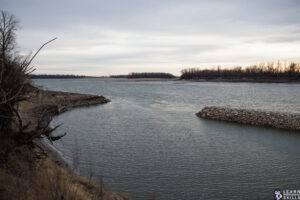


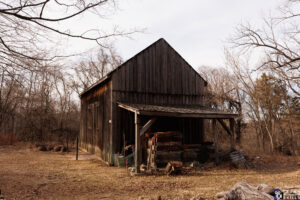


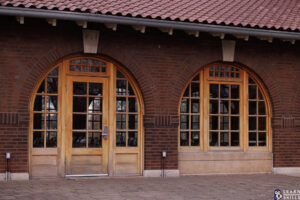
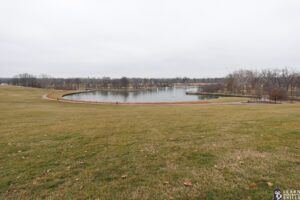




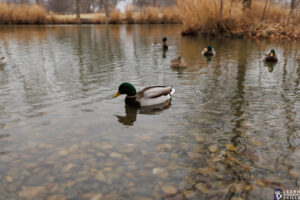




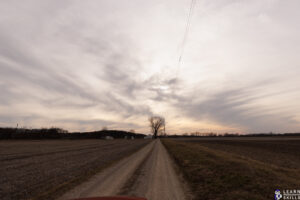




Highlight/Shadow Recovery
The R5 is also really good about recovering shadows at 100-200 ISO. Beyond that it requires being very careful with the selected exposure as shadows get noisy at 400 ISO and beyond. Shadow noise is really grungy with the R5 beyond 1600 ISO. This is where the IBIS can be a benefit if the scene allows for a slow shutter speed. If you plan on recovering shadows in your scene, then you should learn to lean on the stabilization more to keep the ISO as low as possible.
This example below shows that at 100 ISO the shadow/highlight recovery is excellent.


All in all it has been a solid camera for me. It was a big improvement over the EOS R in terms of AF and stabilization. Overall image quality is similar between the two but I think the final edge goes to the R5. The R5 does seem to pick out more color and produce more distinct gradations of color than the R does. I wouldn’t fret too much about the R5’s image quality, just focus on taking good pictures if you’re lucky enough to have one!
Conclusion
The Canon EOS R5 is a great camera that is capable of just about any task that is set before it. It can do sports, wildlife, landscapes, low light, events, family, portraits, studio, product, and everything in between. All with equally good results. The high resolution sensor makes it the highest image quality camera Canon makes and one of the best cameras on the market from any company.
Rating

4.25 out of 5 stars
I WORK HARD TO BRING YOU THIS FREE INFORMATION, PLEASE CONSIDER SUPPORTING THIS WEBSITE WITH A DONATION: https://www.buymeacoffee.com/learnphotographyskills
